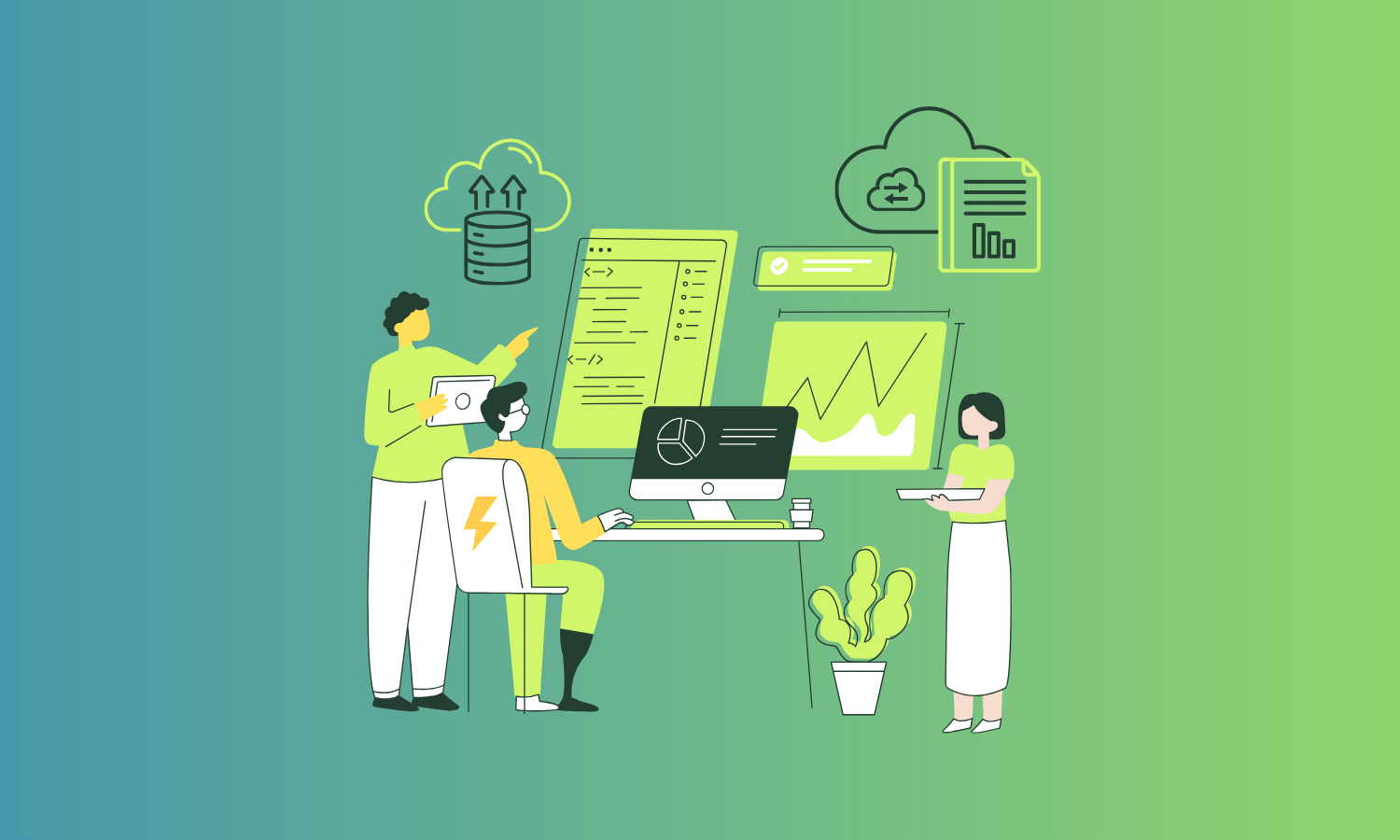1. Technical Introduction
For technology leaders —CTO, CIO, or CISO, depending on the size and structure of each energy retailer— infrastructure is no longer just a matter of support. It has become a strategic factor that determines a company’s ability to grow, adapt, and compete at scale. The challenge is the same for all: to ensure resilient, adaptive systems that are ready for regulatory complexity and large-scale business processes.
The inherited reality of the energy sector is clear: many retailers remain tied to platforms built on physical infrastructure, hybrid environments, or solutions that depend on proprietary hardware, manual patches, and individualized deployments for every change. The result? Hidden costs, system blockages, and an operational slowness that is no longer acceptable in today’s market.
2. Technical Pain Points That Limit Operations
Those who lead technology at energy retailers encounter similar critical challenges:
System Blockages and Saturation
Process peaks—such as billing closures or switching campaigns—can paralyze systems that are not prepared for automatic scaling, causing bottlenecks, timeouts, and a loss of operational efficiency.
Limited Horizontal Scalability
Monolithic or single-tenant systems force companies to over-provision infrastructure “just in case,” or leave them exposed to saturation when business grows. Without true autoscaling, the technology department becomes a bottleneck.
True Scalability During Portfolio Expansion Peaks
One of the biggest operational challenges arises when a retailer acquires a new customer portfolio (e.g., after purchasing another retailer or winning a collective buying process). This means activating and managing tens of thousands of new CUPS (supply points) within days.
In traditional systems, these peaks can cause blockages, outages, or the need for weeks of technical planning and gradual migration. By contrast, a cloud-native, multitenant architecture like QUIXOTIC’s can absorb and process exceptional volumes of new activations and changes without degrading performance or affecting the rest of the operation.
Dependence on Physical Infrastructure
Managing on-premises servers or renting external machines creates:
- Variable, hard-to-control costs.
- Risk of outages and slow recovery times.
- Internal resources consumed by low-value tasks.
Manual Patching and Projects
Every regulatory update, security patch, or functional adjustment typically means ad-hoc projects, customer-specific deployments, and the risk of version drift—losing control over the platform lifecycle.
Slow Adaptation to Regulatory Changes
Regulatory changes that should be trivial (new circulars, modifications in billing structure, tariffs, taxes…) become weeks of development and validation, compromising compliance and business agility.
Data Management and Traceability
Without native integration and a true multitenant approach, managing large volumes of data (CUPS, contracts, ATR, collections) is manual, error-prone, and hard to audit at scale.
In summary:
- Blockages and saturation = reputational and economic risk.
- Lack of scalability = growth bottleneck.
- Physical infrastructure = complexity and unforeseen costs.
- Patches = loss of control and efficiency.
- Slow regulatory adaptation = loss of competitiveness.
- Unstructured data = inefficiency and regulatory risk.
3. Cloud-Native and Multitenant Architecture: Technical Keys
The solution for the CTO or CIO/CISO is to adopt platforms designed as truly cloud-native and multitenant, built on leading SaaS patterns and reference frameworks like AWS. Key pillars include:
Advanced Multitenant Isolation
- Logical security (row-level security) and granular access control (IAM), ensuring full separation of portfolios and regulatory compliance without duplicating physical infrastructure.
- A single environment, maintained and updated for all clients, with simultaneous updates.
Event-Driven Orchestration
- Critical processes (billing, switching, collections) are managed as asynchronous events, enabling parallelism and resilience to component failures.
- A central event bus (SNS/Kafka/SQS) and decoupled microservices guarantee a rapid response at any scale.
Autoscaling and Elastic Sizing
- Microservices and containers automatically adjust resources according to demand, managing everything from routine processes to massive campaigns or regulatory closings, with no manual intervention.
- Real scalability without hidden costs or operational blockages.
Infrastructure as Code and DevOps
- Deployments and configurations are managed with Terraform or CloudFormation, ensuring version control, rollback, traceability, and disaster recovery.
- Regulatory and evolutionary updates are deployed homogeneously across all clients, avoiding customer-by-customer validation cycles.
Automated Compliance and Auditing
- Centralized logging, monitoring, and access control; automated compliance with GDPR, ISO 27001, and other critical standards.
- Process and data access auditing assured without additional client-side development.
API-First Integration
- Exposing processes and data via secure RESTful APIs, with rate limiting and easy integration with external systems (ERPs, banking platforms, distributors, etc.).
4. Practical Application in QUIXOTIC: Architecture and Key Processes
QUIXOTIC applies these principles in a reference architecture for the sector, with a clear focus on technology leaders at energy retailers:
- Massive, Adaptive Billing:
- Billing closures and calculations orchestrated as distributed events, enabling management of hundreds of thousands of contracts without bottlenecks or blockages.
- Regulatory changes deployed in hours across the entire client base, with automated validation and reporting.
- Smart Switching and File Transfer:
- ATR messaging, activations, and deactivations processed as independent events, with no impact on overall operations and full traceability.
- Automated validation and immediate feedback for technical teams.
- CRM, Contracting, and Product Flexibility:
- Secure, scalable APIs for bulk management of contracts, offers, and commercial operations, with advanced authentication and granular permission control.
These APIs enable easy integration with internal systems, ERPs, or analytics tools, as well as automation of large-scale commercial processes. - Advanced product configurator: QUIXOTIC allows agile, no-code definition, modification, and customization of energy products, tariffs, coverages, and bundles.
Technical or operations teams can adapt commercial conditions, launch new tariffs, or discontinue products directly from the platform, with no need for vendor involvement or risk to architecture and process integrity. - All logic for contracting, segmentation, updates, and offer communication is centralized and audited, simplifying control, traceability, and regulatory compliance for both technical and business teams.
- Secure, scalable APIs for bulk management of contracts, offers, and commercial operations, with advanced authentication and granular permission control.
- Advanced Management of Remote Metering and Load Curves:
- The system integrates the complete management and automation of remote metering data, allowing for the import, validation, and profiling of large volumes of consumption data.
- QUIXOTIC automates the profiling and validation of load curves, supporting both indexed billing and advanced compliance and reporting, even in highly complex and high-volume scenarios.
- Collections and Reconciliation:
- Automated flows, management of unpaid bills, banking reconciliation, and audited reporting in parallel, with no risk of blockages or saturation incidents.
- Automated flows, management of unpaid bills, banking reconciliation, and audited reporting in parallel, with no risk of blockages or saturation incidents.
- Security, IAM, and Auditing:
- Centralized access and permissions control, continuous monitoring, and auditable logs, fully compliant with regulatory requirements.
5. Real-World Case: Operational Agility at CHC Energía
“QUIXOTIC’s automation solutions significantly reduced our dependence on BPOs, optimizing costs and improving operational efficiency.”
—Óscar Monrio de la Herran, CIO/CTO at CHC Energía
CHC Energía faced the same dilemma shared by many growing retailers: managing a portfolio of hundreds of thousands of supply points and processing large volumes of data, all under constant regulatory pressure and the obligation to maintain flawless operations.
Previous situation:
The technology team, led by Óscar Monrio, struggled with the limitations of a traditional infrastructure.
- Each monthly billing closure or massive switching process became a challenge: the platform suffered from blockages and saturation, causing delays and requiring manual interventions—multiplying the operational load.
- Regulatory changes, far from being agile adaptations, meant weeks of development, validation, and manual deployments in every environment, generating a constant risk of errors and loss of control over deadlines.
- Internal talent ended up devoting an excessive percentage of their time to resolving technical incidents, supervising integrations, and managing exceptions, rather than innovating and launching new strategic initiatives for the business.
The transition:
The decision to migrate to QUIXOTIC involved a complete architectural overhaul, opting for a cloud-native, multitenant approach with event-driven process orchestration that provided true scalability and operational resilience.
Results achieved with QUIXOTIC:
- Massive processes without bottlenecks: The new system manages large-scale daily volumes in both billing and switching, with no infrastructure limits.
- Tangible improvement in critical processing times: Process optimization led to a reduction of over 40% in the most demanding processing times, minimizing risks of blockages and maintenance windows.
- On-demand scalability: The team can launch new initiatives, regulatory projects, or complex integrations without worrying about technical capacity. The platform grows automatically, adapting to real business needs.
- Automated regulatory updates: Legal or functional changes are deployed simultaneously across the entire customer portfolio, eliminating the weeks of development and validation that were previously necessary.
- Talent freed to add value: The technical team, no longer burdened by “operational fires,” can focus on innovation and developing differential business solutions, directly impacting customer satisfaction and overall efficiency.
CHC Energía’s experience with us proves that adopting a modern architecture is not just viable, but essential for technology leaders in the energy sector who want to move beyond operational complexity and advance toward efficient, scalable, and truly future-ready management.
6. Technical Conclusion
For the technical lead of an energy retailer, infrastructure choice determines whether you lead the transformation—or remain trapped in cycles of blockages, hidden costs, and operational risk.
Retailers that embrace cloud-native, multitenant platforms with event-driven architectures ensure:
- True scalability for massive processes and regulatory campaigns.
- Resilience and availability, even in the face of the highest load peaks.
- Automated regulatory compliance and security.
- Cost efficiency and the release of IT resources for innovation and continuous improvement.
QUIXOTIC delivers this vision, consolidating its platform on best-in-class SaaS patterns, cloud architecture, and automation—accompanying technology leaders in the energy sector through every current and future challenge.
.svg)



.jpg)














